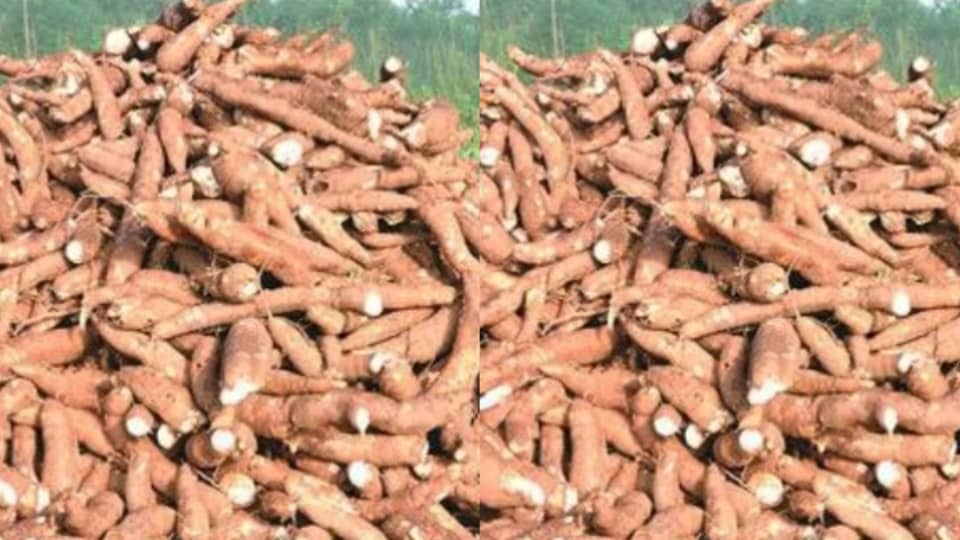Agriculture
Grow Cassava in Just 6 Months: Follow These Simple Steps

Learn how to grow cassava in only 6 months by following these expert tips. Achieve a bountiful harvest with this easy-to-follow guide.
With its adaptability to various soil types and high carbohydrate content, cassava is a versatile crop that thrives in numerous tropical regions. To successfully cultivate this robust crop within six months, follow these straightforward steps.
1. Choose the Appropriate Type.
Selecting the appropriate type of cassava strain is paramount to securing a fruitful crop. Notable strains such as TMS 30572, TMS 98/0581, and TME 419 are renowned for their exceptional productivity and ability to endure external threats like pests or illnesses.
2. Soil preparation should be done.
For optimal growth, cassava requires soil that is well-drained and has a pH between 5.5 and 6.5. Prior to planting, it’s essential to rid the land of any weeds or debris present on the site. In addition, loosening up the ground at a depth ranging from 30-40 cm facilitates root penetration while increasing airflow for better oxygenation. To enhance soil fertility levels further, adding organic matter or compost materials can be beneficial in allowing your plants access to sufficient nutrients they need for development purposes.
3. Trim and Care for Stem Clippings.
To guarantee robust growth, utilize strong and mature cassava stems when planting. Cut each stem to approximately 20-25 cm in length while maintaining between 5-7 nodes. Protect against illnesses by treating the cuttings with fungicide prior to planting them.
4. The act of sowing or placing seeds in the ground to grow into plants is called planting.
Place the cuttings upright or with a minor tilt, submerging around two-thirds of their size into the ground. Leave one-meter gaps between both rows and within each row to ensure adequate growth space for the plants.
Read Also: Guide for Registering Student Loan in Nigeria
5. Irrigation.
Although Cassava possesses drought tolerance, it necessitates appropriate moisture supply, primarily in the early span of its growth. To ensure that optimum humidity levels are maintained without causing waterlogging issues; consistent watering is highly recommended. Adequate implementation of irrigation practices becomes indispensable particularly during prolonged arid episodes.
6. Controlling Weeds.
The growth of weeds may hinder the nutrient and water supply for cassava. Therefore, it is highly important to conduct regular weeding, particularly during the initial three months. Utilizing organic materials such as leaves or straw while mulching can aid in suppressing weed growth and preserving soil moisture levels.
7. The process of fertilization.
At the time of planting and after three months, it is recommended to use a balanced NPK 15-15-15 fertilizer. Cassava growth can be further boosted by supplementing with potassium that aids root development. Alternatively, organic fertilizers including compost or manure are viable options as well.
8. Management of Pests and Diseases.
Regularly check the plants for diseases and pests such as mealybugs or green mites. Noticeable infections like cassava mosaic disease can impact growth negatively. To manage these issues, use suitable pesticides and practice crop rotation techniques.
9. Harvesting is the ninth step.
The maturation of cassava usually occurs after six to eight months since the plantation phase, once its leaves start turning yellow and dropping off. When handling the roots during harvest time, it’s crucial to dig them up with caution as not doing so may damage their tubers.
10. Handling of harvested produce after harvest.
To avoid decay, it is essential to promptly process the harvested cassava roots. Cassava can be kept in a cool and dry environment for a limited time or transformed into products such as flour, gari or chips that possess extended durability.
A new conclusion needs to be given as there is no preceding text or premise for the assistant to work with. Please provide context and information so that I may assist you better.
In a span of six months, you can cultivate nutritious and high-yielding cassava by adhering to these straightforward procedures. When given ample attention and supervision, this root crop assures consistent nourishment and financial stability. Here’s to prosperous farming!
